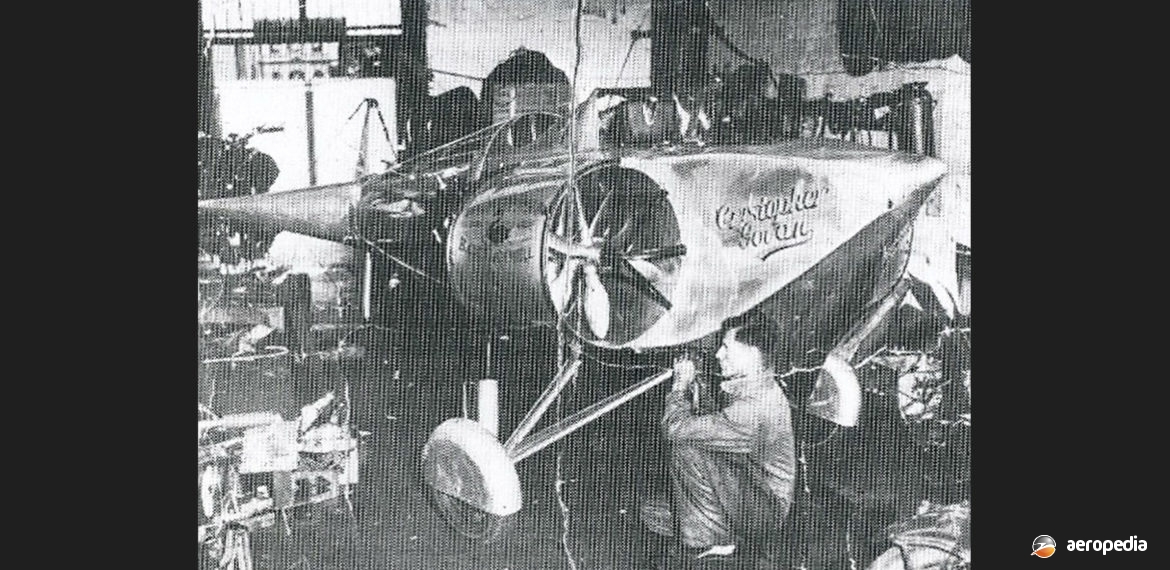Photograph:
The ducted fan aircraft with the name Christopher Govan in about 1937 (Author’s collection)
Country of origin:
Australia
Description:
Single-seat, twin-engine monoplane
Power Plant:
Two FN two-cylinder VEE air-cooled converted motor-cycle engines
Specifications:
- TBA
History:
In 1933/34, following the announcement of the 1934 MacRobertson Air Race from England to Australia, there was great interest around the world in competing and many persons and organisations set about entering suitable aircraft. A number, such as the de Havilland DH.88 Comet, were specifically designed and built to win the race. A couple of designers in Australia set about designing an aircraft that they considered would enable them to win First Prize. Amongst these were L J R Jones, who was involved in the aircraft known as the Centenary Racer; and B C C Tuckwell. However, work on this aircraft was much too late and construction could not be completed in time for the race.
Mr Tuckwell made a couple of efforts to build aircraft. He built a glider in 1922, and a biplane fitted with floats with a converted Harley Davidson motorcycle engine in 1926 but during testing it crashed and sank in the Swan River, WA. He later completed a Heath Parasol but he suffered some injuries when this aircraft crashed during ground runs. He moved to Melbourne, VIC in 1936 and built models of aircraft designs of his own.
Tuckwell designed and commenced construction of a twin-engine light aircraft in Melbourne. It was of metal tube construction with fabric covering and was fitted with two converted FN motor-cycle engines, one at the rear of each wing driving via shafts two twelve-blade propellers mounted in each in tandem. These ducts were similar in appearance to the duct used later on the Edgley Optica and a number of other designs but were much smaller in diameter. Despite an original intent to build the aircraft and enter it for the 1934 air race, construction did not commence until 1936 at a garage in Little Lonsdale Street, Melbourne.
The design was of all-metal construction and had an unusual tail: in lieu of a conventional rudder and elevator it had a rotatable and hinged tail unit actuated by cables. Early on it had the name Christopher Govan painted on the nose but this was later changed to just Christopher. It was said it could be converted to gyroplane configuration if required and drawings survive of it in this configuration.
On completion it was taken to a paddock at Essendon, VIC where high-speed runs and, it is said, a couple of hops were made but performance was found wanting. The ducted fans were then abandoned and the aircraft was fitted with two 748 cc FN engines but as far as can be ascertained it was never flown. Its eventual fate is not known.
Tuckwell went on to build another single-seat twin-engine shoulder-wing of conventional configuration aircraft with an enclosed cockpit using the fuselage from a Cierva C30. Its fuselage was of metal with fabric covering, and the wings were wood also with fabric covering. Trials of this machine were made at Fitzroy Racecourse, VIC in April 1940. The builder claims to have made a few hops. It was sold and is said to have been flown by the new owners but evidence of this has not yet come to light.

